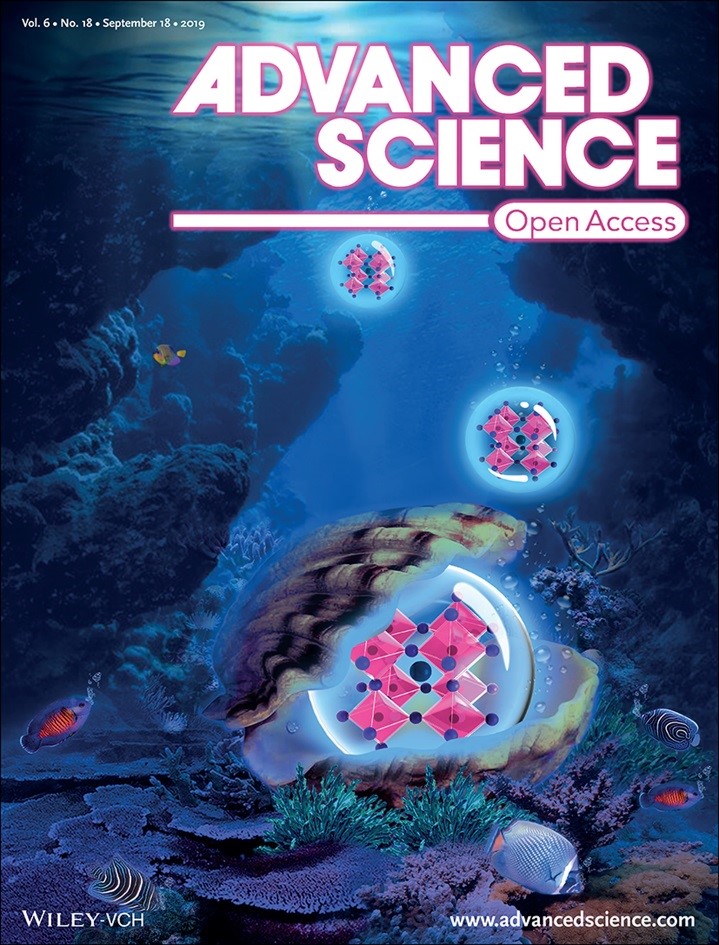Perovskite quantum dots have great potential application in photoelectric device due to the excellent optical properties, such as narrow-band luminescence, good monochromaticity, and high photoluminescence quantum yield. However, the problems of instability and non-radiative Auger recombination manifested as photoluminescence blinking hindered their application in quantum dot nano-lasers, solid-state lighting and other fields.
Recently, a research team in State Key Laboratory of High Field Laser Physics, Shanghai Institute of Optics and Fine Mechanics of Chinese Academy of Sciences (CAS) in cooperation with Chongqing University has made a new progress in enhancing the lasing performance of quantum dots nanolasers. Related research result was published in the Advanced Science as a cover article.
In this work, researchers first fabricated novel core/shell structured colloidal perovskite quantum dots (QDs) by covering CsPbBr3 QDs with II-VI semiconductors and effectively improved their stability under humidity and high temperature.
They found that the CsPbBr3/CdS quantum dots exhibited obvious nonblinking characteristics. It was due to the carrier ofCsPbBr3 that QDs was confined to the surface after successfully coating CdS shell, which effectively suppressed non-radiative Auger recombination and ensured carrier complex luminescence inside the quantum dots.
In addition, the researchers used microscopic optical system to study the spontaneous amplification emission (ASE) and lasing performance of CsPbBr3 QDs and CsPbBr3/CdS quantum dots. In the ASE test, the coated perovskite QDs exhibited superior performance. The ASE threshold dropped of 14% with respect to that of pure CsPbBr3 QDs. Furthermore, a stable low-threshold whispering-gallery mode lasing action with high-quality factor was achieved by incorporating CsPbBr3/CdS QDs into microtubule resonators.
All these results indicated that the core/shell colloidal perovskite QDs may provide a versatile, stable platform for the generation of nonblinking perovskite materials without sacrificing their efficient optical performance, and hence for future exploration and development of nano-lasers.
The work was supported by the Strategic Priority Research Program of CAS, International S&T Cooperation Program of China, the National Natural Science Foundation, and the Open Fund of the State Key Laboratory of High Field Laser Physics (Shanghai Institute of Optics and Fine Mechanics).

Cover Article of Advanced Science 2019 (Image by SIOM)
Article website: https://onlinelibrary.wiley.com/doi/full/10.1002/advs.201900412
Contact:
Mr. Cao Yong
General Administrative Office
Shanghai Institute of Optics and Fine Mechanics, CAS
Email: caoyong@siom.ac.cn